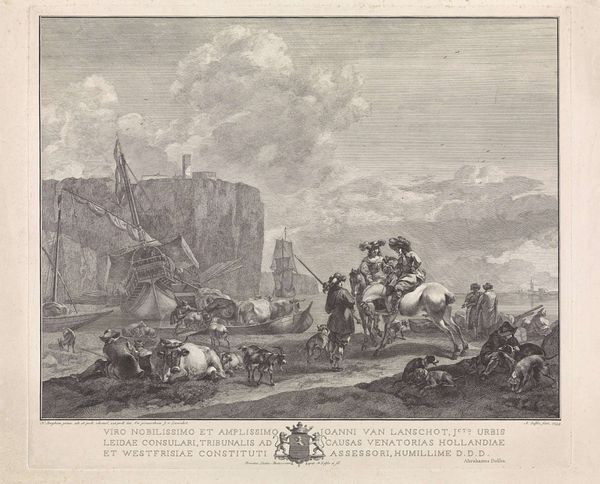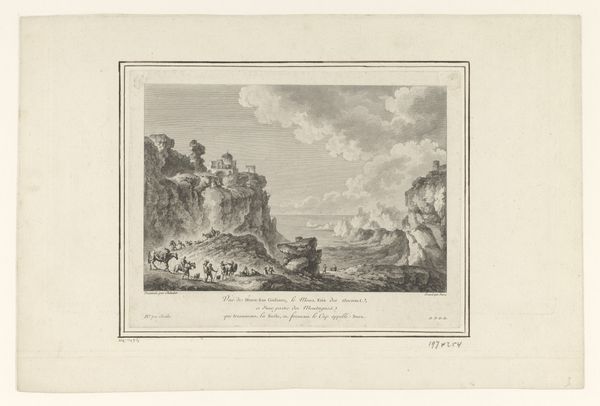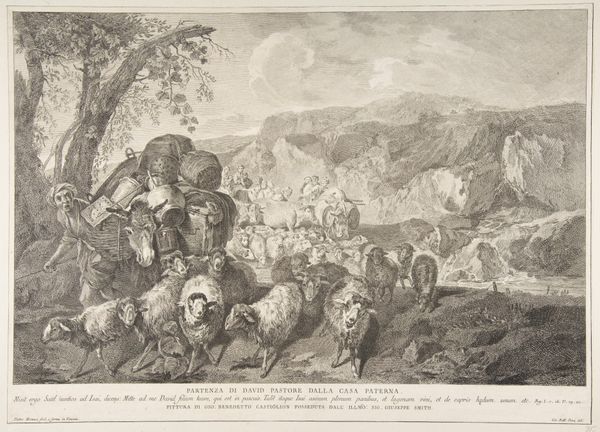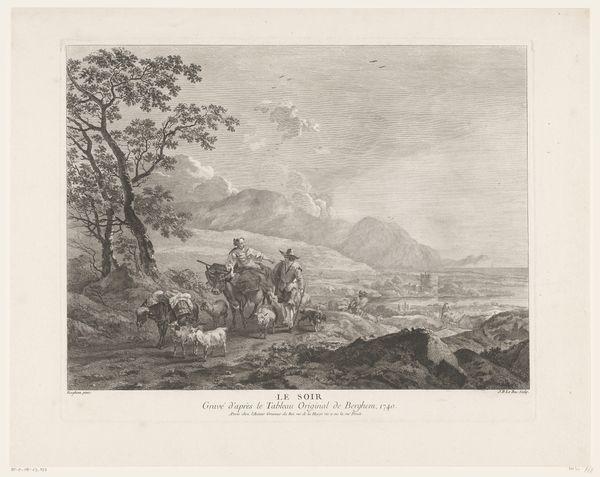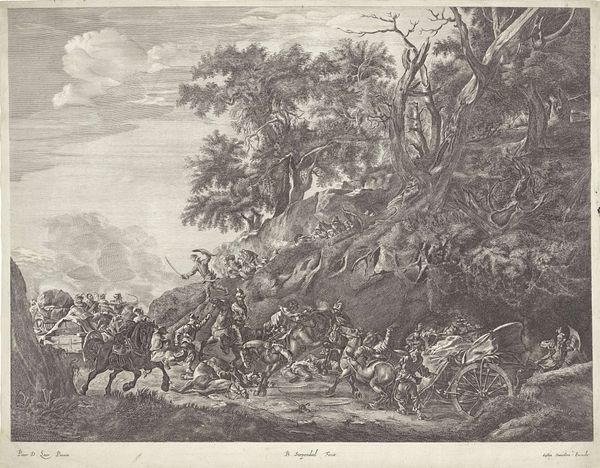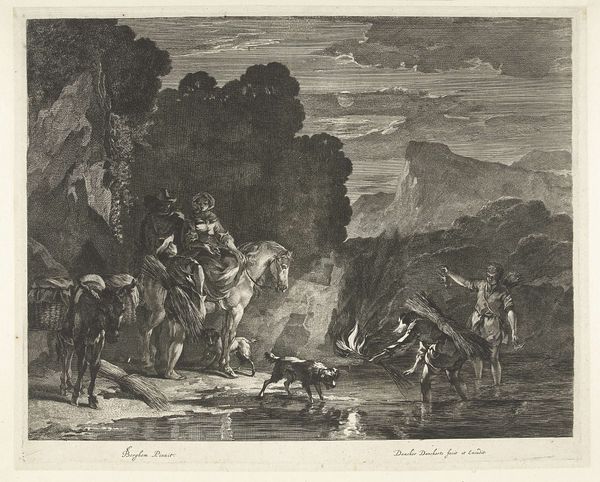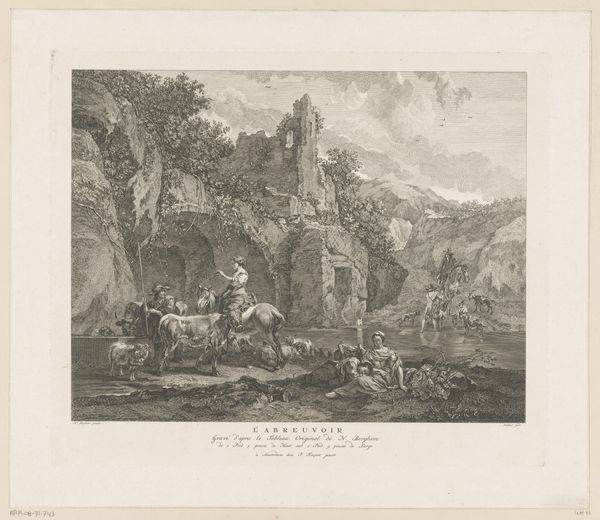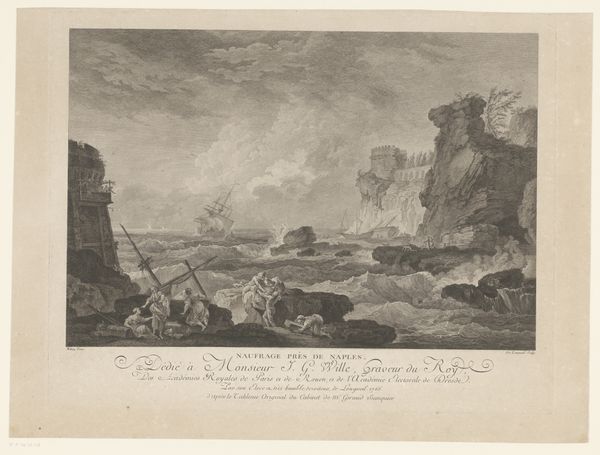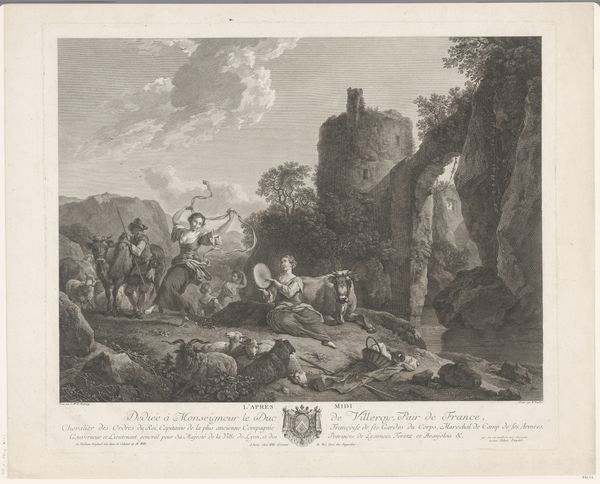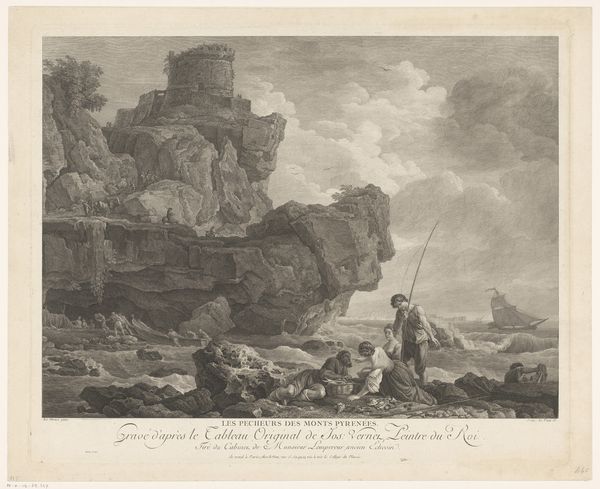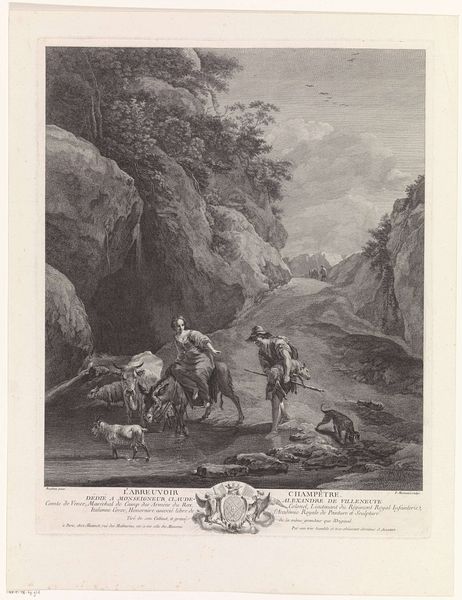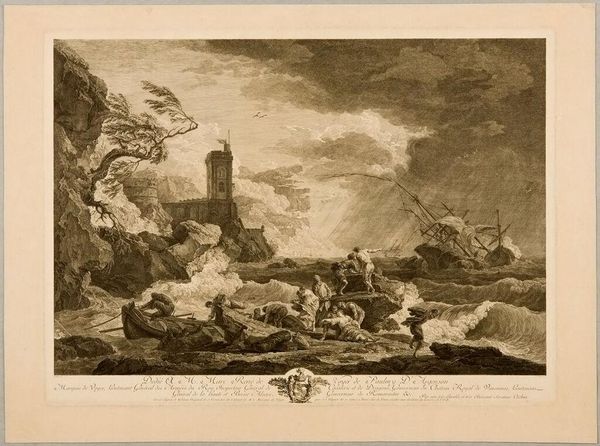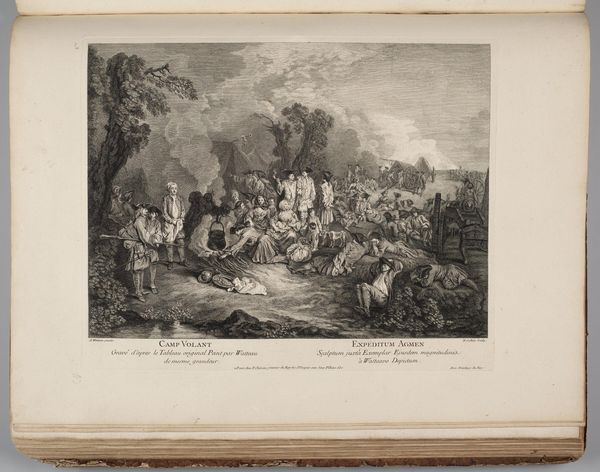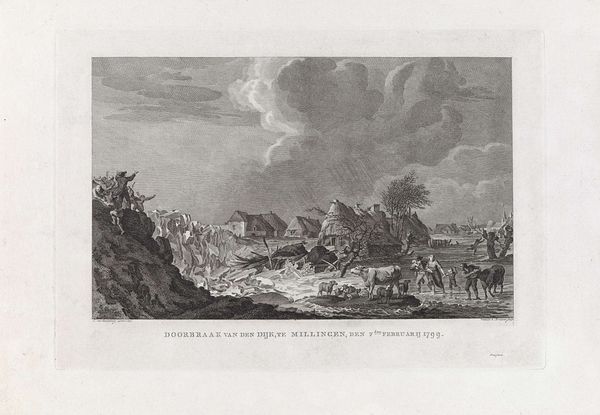
drawing, print, paper, engraving
#
drawing
#
baroque
# print
#
landscape
#
paper
#
history-painting
#
engraving
Copyright: Public Domain
Curator: Here we have Jacques Philippe Le Bas' "After Dinner," an engraving from 1742 currently residing at The Art Institute of Chicago. The medium is described as print on paper. It depicts figures gathered by the water, against a landscape with cliffs, boats, and some architecture in the background. Editor: The first thing that strikes me is the overwhelming stillness. Even with figures present, it evokes a quiet, almost melancholic atmosphere. The detailed lines in the engraving create a very particular texture across the entire surface. Curator: Yes, and this stillness invites us to reflect on the socio-political context of its creation. What does “After Dinner” signify for different classes? Whose leisure is depicted, and whose labor makes that leisure possible? Consider the hierarchies implied within the scene itself. Editor: Good point. Visually, all the labor seems off-loaded to other, unseen places. We have the suggestion of material excess through the gathering, yet, who processed these goods for this moment? It’s interesting that this print aims to display luxury while hiding the essential means to making such a display possible. Curator: The engraving itself is also a fascinating object, speaking to 18th century modes of production and circulation of images. Engravings allowed for the wide dissemination of artwork and ideas; consider how this piece might have influenced or reflected prevailing societal views about leisure and social class distinctions. Editor: Exactly! The materials here are simple – paper and ink - yet the technique involves highly skilled labor. Someone crafted those plates with unbelievable precision. We tend to not focus on that sort of effort when analyzing art from this period. Curator: Thinking through gender, how are the subjects coded through dress and action? I wonder what other narratives intersect with this one and perhaps counter its intended representation? Editor: These counter narratives are often in the material culture surrounding artworks such as this: how many impressions were produced? Where were these impressions consumed? Who had access to them? Curator: The beauty of engaging with art like "After Dinner" lies in how it opens pathways to consider its intersectional history and ongoing impact. Editor: Indeed. Approaching it through the lens of production allows for a much more embodied and material reading of history. A reading from the ground up.
Comments
No comments
Be the first to comment and join the conversation on the ultimate creative platform.
